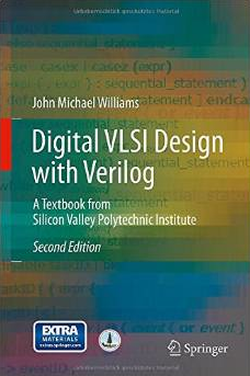
After spending some years at sea in the U. S. Navy, John Michael Williams returned to school for degrees at Columbia University, the University of Chicago and Southern Illinois University, eventually studying human vision in postdoctoral study at the University of Michigan. He moved to California in 1982 and spent significant work time as an applications engineer at Daisy Systems and then at Compass Design Automation. After attending various physics-related classes at Stanford, he began teaching at Silicon Valley Technical Institute, where he wrote the first edition of "Digital VLSI Design with Verilog" and many other course workbooks which now are posted at Scribd. He moved to Oregon a few years ago, where he remains mostly retired. (From the publisher's About the Author note)
Dan: What motivated you to write Digital VLSI Design with Verilog in the first place?
John: I was teaching a Verilog 2-day course, which I expanded to 12 weeks after I started teaching at SVTI (Silicon Valley Technical Institute, now Silicon Valley Polytechnic Institute). I started by writing day-by-day student instructional material, which the SVTI owner, Ali Iranmanesh, realized that I could combine to a single course book. I approached Springer about it, and within less than a year wrote a publishable 12 week course -- the first edition.
Dan: Did you have any special challenges in writing this book?
John: The code examples had to be simulated and re-simulated to get them right. The first edition ran 450+ pages, and I had to post a combined "teacher's guide - correction list" which steadily grew as I taught the course repeatedly during the next few years.
Dan: How did the publishing process work? Did someone at the SVTI help you with the mundane details of publishing like proof-reading, cover design, formatting?
John: I did all the work myself, although Springer somewhat reformatted my first draft copy. The cover design was Springers, except for the front and back covers' text. The 27 problem solutions were mine, provided in an on-disk DVD.
Dan: How were sales of the first edition?
John: They were not great but adequate to repay me for all the writing.
Dan: Why did you come out with a second edition?
John: The final IEEE approval of SystemVerilog came out soon after the first edition; so, I wanted to include its major Verilog-related features. All of IEEE Verilog is included in SystemVerilog, with some expanded features, plus new non-Verilog materials such as assertions and interfaces. Since about 2010, there is no more "Verilog" from IEEE, just "SystemVerilog". The second edition (2014) not only includes a new chapter on SystemVerilog, but it also contains some introductory material on another Verilog offshoot, "Verilog A/MS". I improved the writing of the first edition everywhere, made all known corrections, and expanded the Verilog basics to make the book more useful to beginners. The net result was almost 100 new pages. The 2nd edition also includes a complete set of problem solutions, available for download from Springer.
Dan: You’ve written articles all your life. I assume you get an extra boost to your ego having a hard cover book out there with your name on it?
John: No real extra ego boost -- I just am happy not to have to printout out dozens of pages of text, every week, should I teach the course again. Since I moved to Oregon in 2011, I have taught the course just once, using an internet-based presentation (DropBox).
 RSS Feed
RSS Feed